Toys for Two Month Old Baby Girl
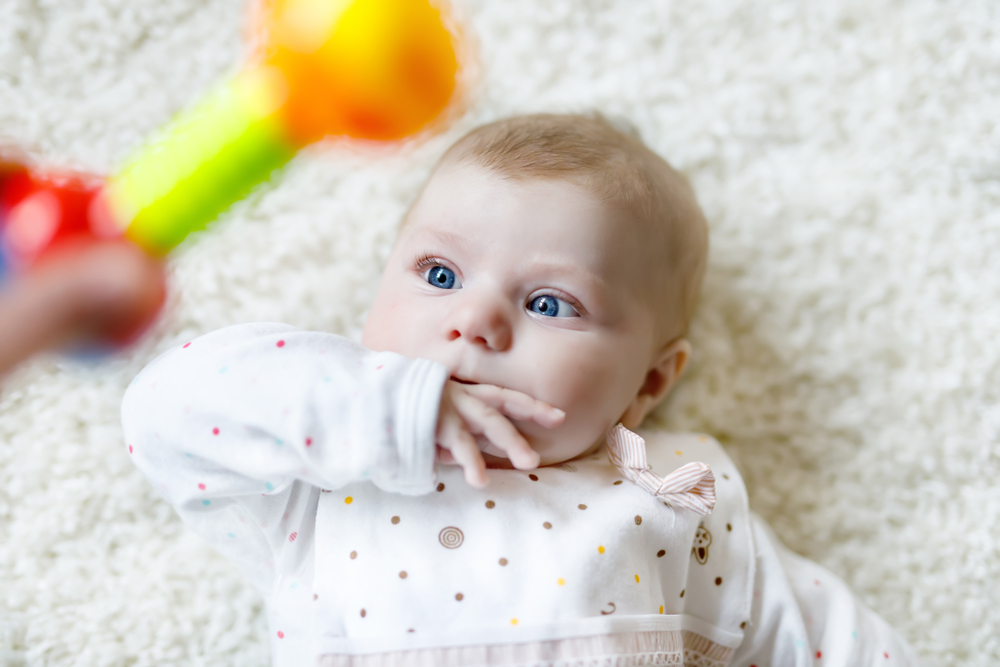
Your baby is 2 months old. This period of life is both very joyful and surprising to the parents. At this point, the baby becomes more and more awake and starts exploring the world, after only eating and sleeping just a couple of weeks ago.
The two months baby milestone is also the time when the mothers, especially young ones, start having their first worries. Not everything can be learned from books and from experienced grandparents, making the parents worried about lots of matters. Mothers start wondering if their child is developing correctly, what should a 2-month-old baby be able to do in general, and whether it is necessary to strive for strict rules of child development.
If you are one of the parents who are worried about the correct development of the child, you do not need to get anxious. The development standards of children at 2 months old have long been established by pediatricians, and you will be able to assess how your baby complies with them for yourself and, if necessary, assist the baby.
Contents:
- Physical development
- What does a 2-month-old baby need to know how to do
- Moving activities and reflexes
- Intellectual development
- Neuro-psychological and emotional development
- Organs of senses
- The muscle tone
- The daily schedule of a two-month-old baby
- The child's development the age of 2 months old: the doctor's opinion
- Frequent issues: when should parents start to worry and how to resolve them
- How to foster the child's development: tips for parents
Physical development
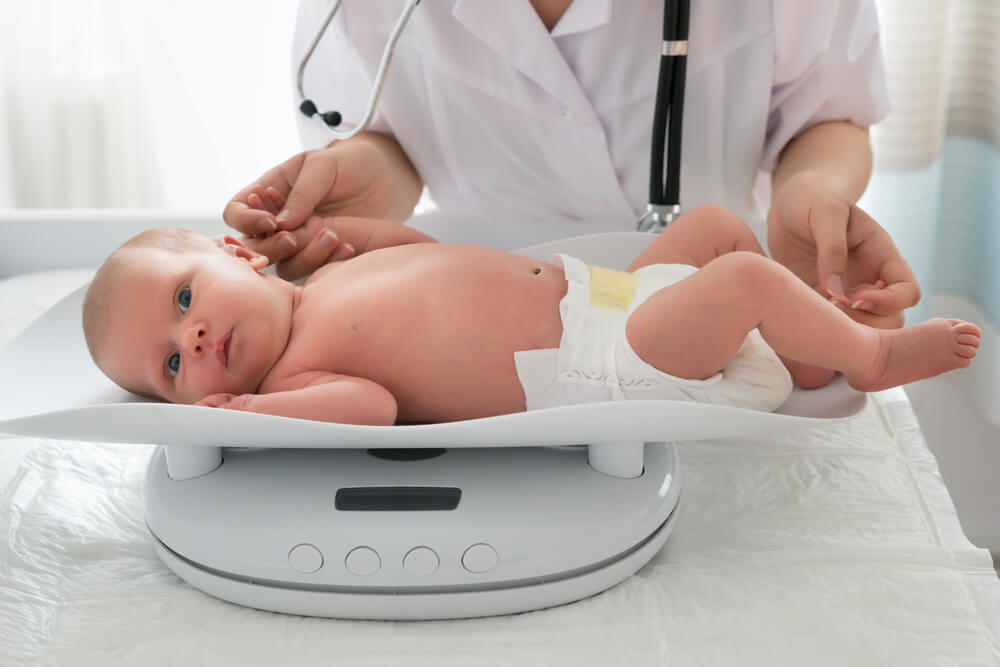
In the first year of life, the physical indicators of the baby, such as height, weight, head and chest circumference are monitored with particular attention, as they point out to the compliance with developmental norms. However, deviations from the average up or down are not a reason to believe that the child has issues with their development, especially if the baby was born prematurely or there is a genetic predisposition to a certain body type.
Average physical development parameters for a 2-month-old baby:
| Measured parameters | The norm for boys | The norm for girls |
| Weight (in kg) | 4,2-6 | 4,2-5,5 |
| Height (in cm) | 53,8-59,4 | 53,3-59,3 |
| Head circumference (in cm) | 39,1 | 38,3 |
| Chest circumference (in cm) | 39 | 38,1 |
⠀
Other physical development norms for a 2-month-old baby:
- Even if the weight of the boy or girl is less or more than the average, pay attention to a more important indicator, which is the weight gain over a monthly period. For the period from one to two months, the child should gain about 800 grams. The total body mass increase should be 1300-1500 grams in the first month of the child's life.
- Overall changes in other indicators: monthly growth increases by 3 centimeters, and the circumference of the head and chest increases by 2 centimeters.
- The total duration of sleep is reduced in comparison to the initial 18 hour periods of sleep in a newborn.
- The baby's scalp starts changing: permanent hair begins to grow instead of fluff.
- The child begins to recognize pain and other unpleasant sensations better, for example, they point out the discomfort of wet diapers. That is why a baby that was quiet at two months of age would start crying and screaming much more often later on.
The differences between boys and girls

There are still no significant differences in height and weight between boys and girls at the age of two months. On average, boys are larger, however, it is also not uncommon for a girl to exceed the average height and weight, and this is not considered a deviation from the norm.
According to certain indicators and observations of both doctors and parents of children of different sexes, girls demonstrate a faster development than boys. This is statistically proven: fewer female babies are born than male babies, and girls have to learn different skills faster. This is an evolutionary feature that allows maintaining a balance between the two sexes. As a consequence, by the age of two months, girls hear and see better, as well as react more sharply to certain irritating factors.
Physical abilities
What should the physical abilities of a 2-month-old baby be:
- holding a toy or another object that an adult put in the child's hand;
- keeping their head upright and raising their shoulders while lying on the stomach, for about twenty seconds;
- trying to turn their head from side to side from a prone position with a raised head, especially if something has caught the baby's attention.
What does a 2-month-old baby need to know how to do
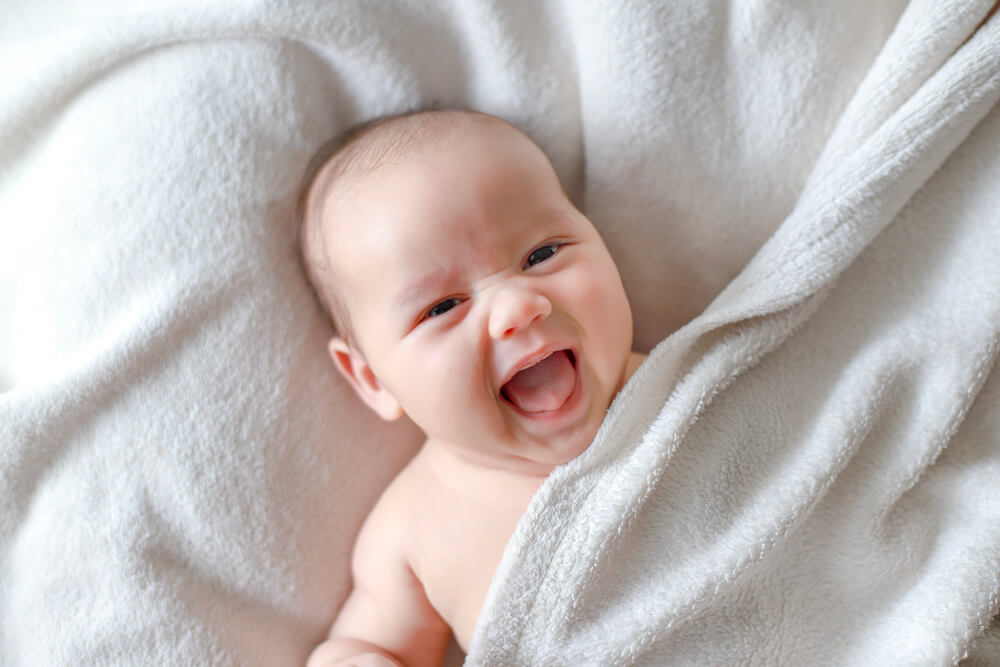
The period of life up to three months old is generally the most important for a child under one year old. It is at the two months milestone that the child begins to behave meaningfully: the baby adopts a variety of skills that suggest the normal development of motor activity, sensory organs, as well as timely intellectual and neuropsychic development.
Here is what a child is already doing well by the middle or end of the second month of their life:
- thanks to the strengthened muscles, raising the head and chest while lying on the stomach and performing some imitation swimming movements with the arms and legs;
- knowing how to clench and unclench the palm of the hand, grabbing a toy, the fingers and the hair of an adult;
- bringing a brush towards the lips, sucking on their fingers;
- holding the head for several seconds when being in the arms of an adult;
- touching a hanging toy, pushing it away;
- rubbing their eyes and nose with the palms of their hands or their fists;
- smiling;
- showing interest in sounds;
- first sounds start to appear in their speech;
- starts distinguishing between familiar and unfamiliar people;
- focuses their gaze on the subject of interest briefly.
You will find out about every aspect of the development of a 2-month-old baby in more detail, below.
Moving activities and reflexes
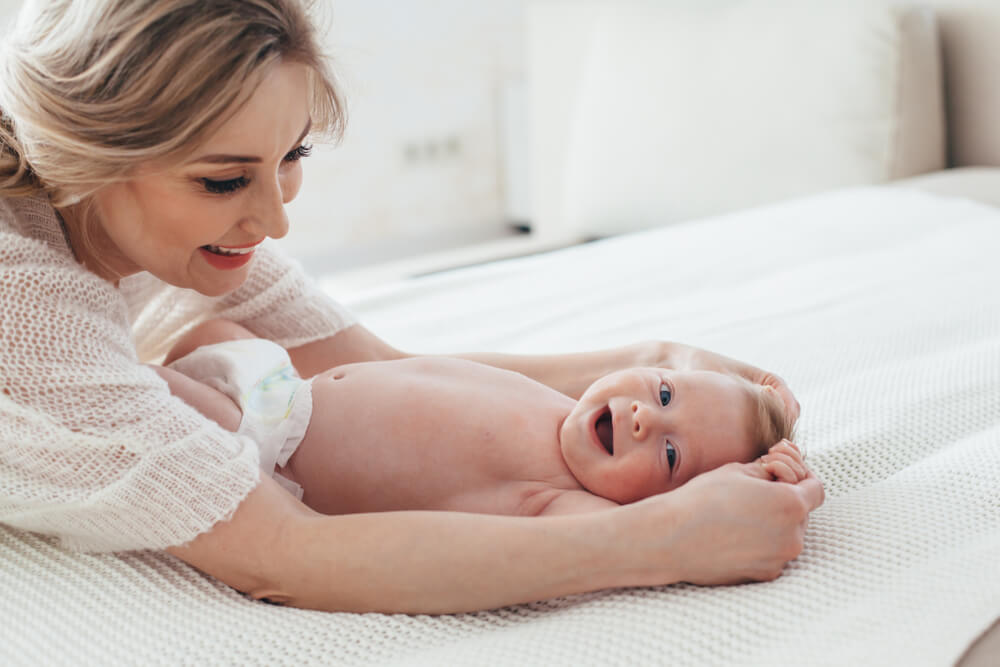
At the two months milestone, the baby adopts positions that are completely different from the positions of a newborn. The child's legs when lying on the back or on the stomach, are no longer constantly bent due to the muscle hypertonicity of newborns becoming gradually weaker. Nevertheless, the 2-month-old baby still spends part of their time in the embryo position, which is normal for their age.
The reflex of a newborn firmly resting their feet against a surface when they are held by an adult, also weakens. A two-month-old baby still lightly rests their feet on the crib, sofa or on other support. The breath-holding reflex is preserved, but by the end of the second month of the child's life, it usually fades away completely.
Walking and crawling reflexes develop when the child is being held in certain positions. By the age of two months, the baby sometimes adopts a position of a "fence" when they lie on their back: they turn their head to the right and straighten their right arm and right leg. The same happens when turning the head to the left, but only with the left arm and leg.
A two-month-old child starts reacting to odors differently. When they come across a pleasant scent, they either freeze or smile, and when they feel an unpleasant odor, they wrinkle their nose and sneeze.
Intellectual development

The behavior of a two-month-old baby is already quite conscious: they, to the best of their ability, learn about the world around them and about how to establish simple cause-and-effect relationships. The baby realizes that their mother is the main figure that takes care of them, and reacts to the presence of her differently than to other people: they smile, try to walk and follow their gaze around the mother. A child does not yet experience such complex emotions as fear or embarrassment and willingly goes into the arms of any adult.
The baby expresses their attitude to certain objects in a simple form. For instance, they are drawn to things that are interesting to them, push uninteresting things away or do not react to them at all. They produce simple, but already emotionally charged repetitive sounds that are reminiscent of singing. And although those around them seem to be indistinguishable, these are the first attempts of the baby to recreate the speech of adults.
Neuro-psychological and emotional development
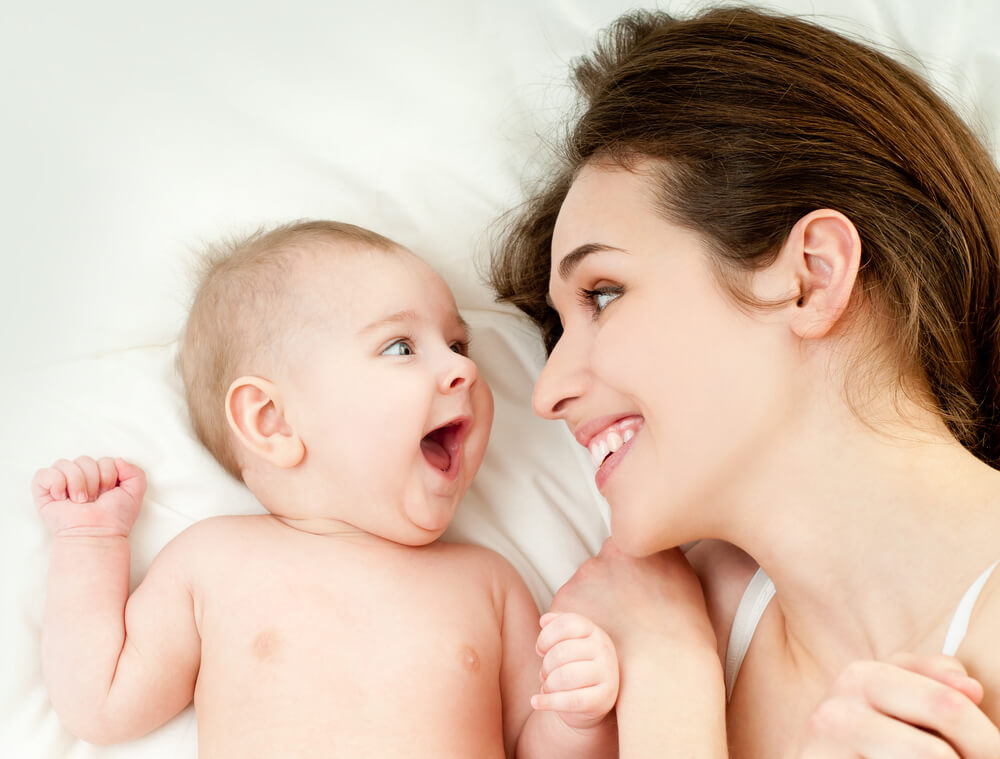
A two-month-old child is experiencing emotions, as well as the need to respond to them. Hence, their crying changes: the crying ceases to be monotonous, like that of a newborn, it is replaced by some intonation and a pattern. Sensitive mothers can determine the cause of the dissatisfaction of their child by the crying of their son or daughter. Those reasons may include fatigue, dirty diapers, hunger or something else.
The baby's smile becomes meaningful: they start not only simply raising the corners of their lips, but actually smiling, reacting to a certain event, for example, to a gentle voice. Some babies already know how to laugh at the two-month milestone. The baby also cries and screams consciously, realizing that they can attract their mother with this.
Not only the child smiles, but they also use different facial expressions. They may frown and wrinkle their nose, and open their mouth when being addressed. They can now also hold their gaze on the person who is talking towards them and can look at the face of the speaker for a long time.
The 2-month-old baby realizes that a mother or another person who is affectionately talking to them can pick them up and anticipates this event with emotions, by making impatient sounds and quickly moving their arms and legs.
Organs of senses
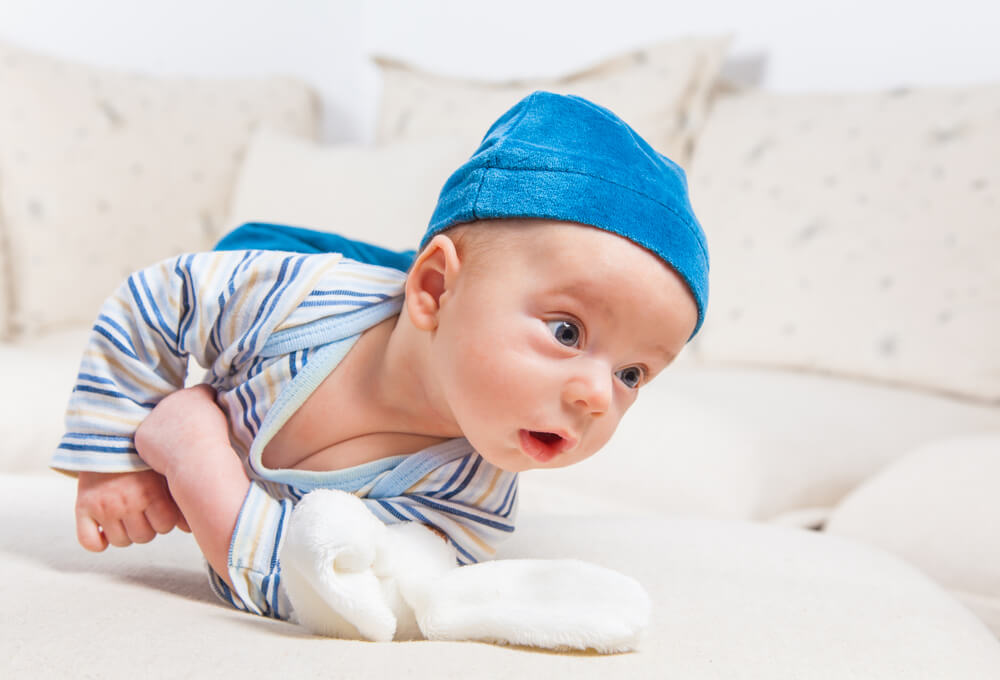
The baby is growing up, and their senses develop on a daily basis. The 2-month-old child now sees and hears better than a newly born infant and, as a result, reacts much more to the world around them.
A two-month-old baby becomes interested in many objects, and by the middle of their second month of life, they try to grab objects that attract them and hold them in their hands. They are not always able to grab on them, as it is difficult for them to calculate the trajectory of movement accurately at this age. However, if an adult puts an object in a child's little hand, the baby will hold it, firmly squeezing it in the palm of their hand.
If a rattle is given to a two-month-old baby, they would quickly realize that the rattle makes sounds when it is set in motion. The baby begins to play with the toy consciously.
Hearing becomes more sensitive, and the baby looks in the direction from where the sounds are coming and listens actively. They also may be intimidated by harsh or unfamiliar sounds, reacting to them by flinching and blinking frequently.
Vision is also in development, and although the child is not yet able to discern small details of the surrounding world, bright moving objects already manage to capture their child's attention. By the age of two months, the infant begins to squint in response to bright light.
The baby continues to form some sensations of taste, however, at this point, they can only distinguish the sweet taste, all other tastes are rejected.
The muscle tone
Young parents are often worried about the hypertonicity of the muscles of a two-month-old baby. Considering muscle tone to be a problem, moms and dads consult with neurologists and sign their babies up for special massage sessions.
However, you shouldn't worry about hypertonicity too much. At the two months milestone, muscle tone is still preserved in the arms and the back. On average, hypertonicity in babies disappears completely only by the age of 6-8 months. Nevertheless, if it seems to you that your child's muscle tone is too strong, record the bright manifestations of muscle hypertonia on video and show it to your pediatrician.
The daily schedule of a two-month-old baby
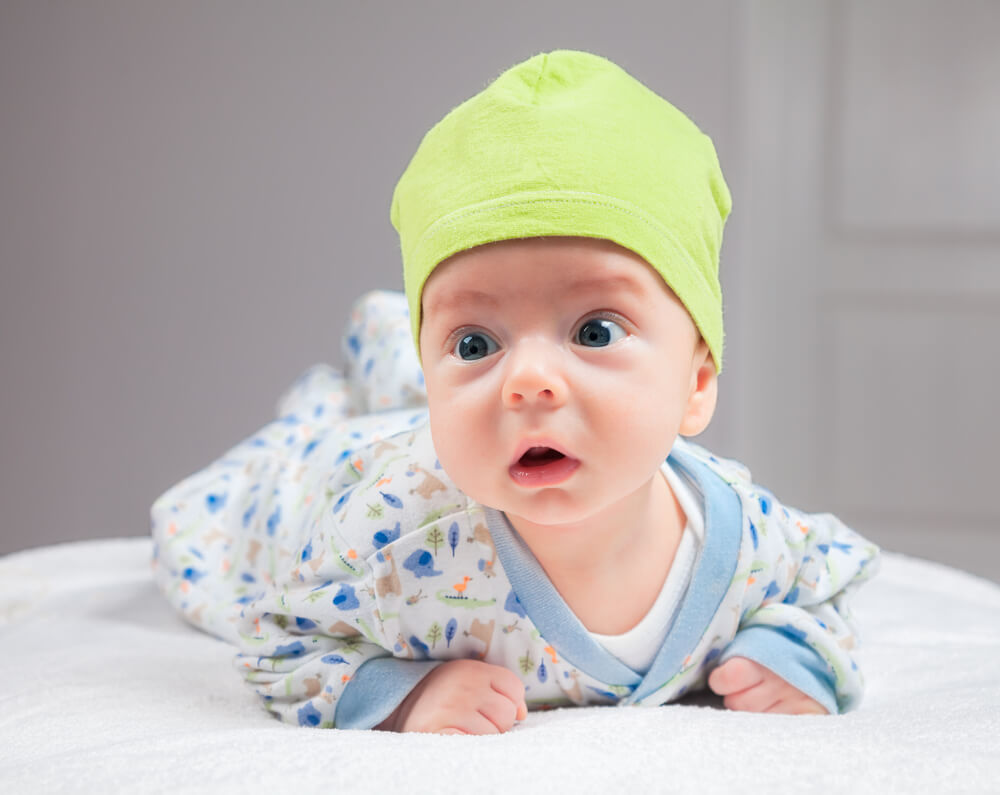
The well-being of both the mother and the child depends on a well-established daily regime. It is really important to set the schedule of the day, however, you will need to consider that the biorhythms of a two-month-old baby would be completely different from the biorhythms of, for instance, a six-month-old baby.
At the age of 2 months, the mother can only start to lay the foundations for the future adherence to a daily routine. If the baby falls asleep and wakes up at different times, this is the norm and there is no reason to worry about it.
Start gradually getting your child used to the following daily routine:
- 7.30 am – waking up;
- feeding every 2.5/3 hours. The frequency of feeding is set depending on the type of feeding: breastfeeding, mixed or artificial feeding pattern;
- daytime sleep – 4-6 times a day, ranging between 30 minutes and 3 hours;
- 8.30 pm – bath;
- 9 pm – bedtime.
The regime of a two-month-old baby is generally unstable, apart from some exceptions. If your baby, for example, sleeps little at night, falls asleep late and wakes up at night to be fed frequently, you will have to adjust to this temporarily. Usually, by the age of four months, babies begin sleeping more at night and staying awake during the day.
The child's development the age of 2 months old: the doctor's opinion
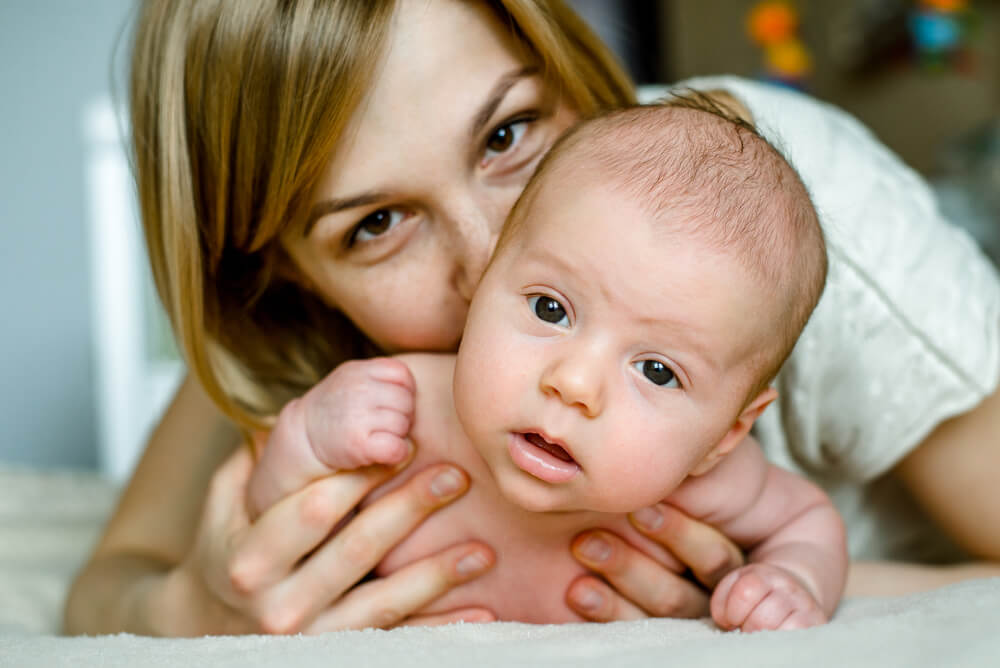
According to a number of doctors, the main problem with children at the age of two months is the difficulty in identifying their reasons for crying. Babies mostly cry because of hunger, thirst, drowsiness and problems with stool. The doctor advises to start by offering the crying child something to eat or drink, and if this doesn't help, to try to rock the baby to sleep.
If the crying does not stop or if it intensifies, it is possible that the child cannot empty their bowels on their own. Think about the last time the child had stool, and if more than ten hours have passed, help the baby by giving them a belly massage. You can try pressing their legs against their stomach.
Otherwise, doctors advise to focus exclusively on the pace of development of your own child, not trying to keep up with the development of children of your friends or neighbors. Healthcare professionals argue that severe pathologies that would prevent the baby from starting to walk and talk are not so common and are not visible at the two-month milestone, but much earlier. In fact, they can usually be spotted at the stage of pregnancy.
Frequent issues: when should parents start to worry and how to resolve them
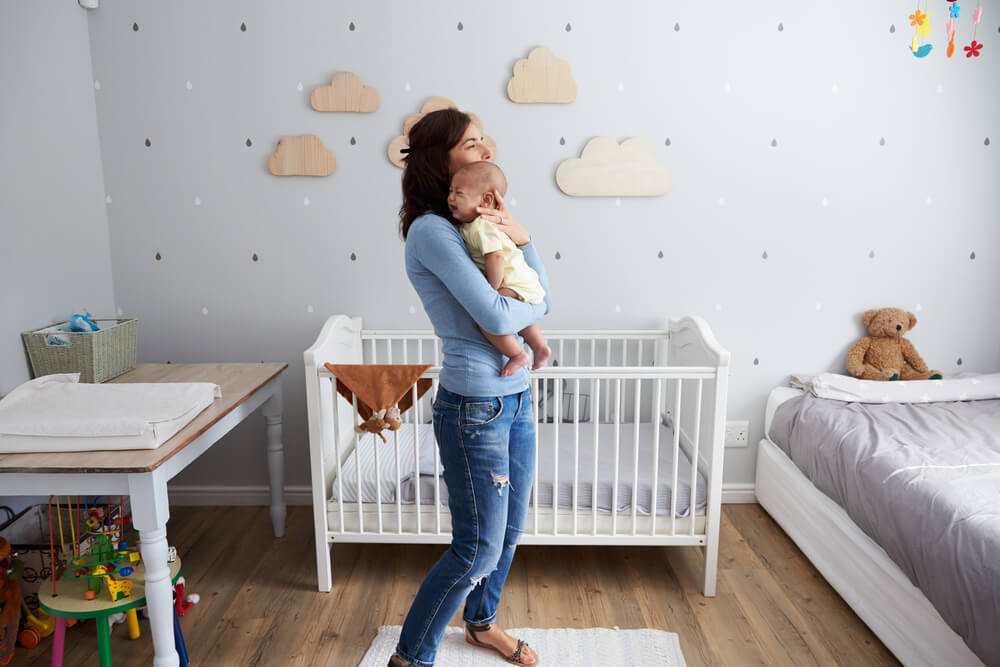
Young parents may become worried for different reasons. Below are the most common five reasons that are associated with the development of a two-month-old baby:
1. The child does not even try to hold their head, constantly tilting it to the shoulder of an adult.
Solution: put the baby on their stomach as often as possible (before feeding or at least half an hour after eating). In this position, different muscle groups will get strengthened efficiently, including the muscles of the neck.
2. You notice that the baby's muscles do not develop symmetrically: there are more muscles in one part of their body than in another.
Solution: carry your baby, switching your hands periodically, turn them from one side to the other when they sleep.
3. The baby's sleep is disturbed, they sleep poorly, they throw tantrums when falling asleep and waking up.
Solution: Try to stick to a bedtime and waking up routine.
4. Colics.
Solution: Give the baby a belly massage, apply some gentle heat to the belly or use a gas tube.
5. Dry skin and allergic reactions on the baby's skin surface.
Solution: Reconsider the bathing procedure. Skin problems in babies may occur from bathing too often and using bath additives. Bathe your child three to four times a week, without using any additives and without any pharmaceutical herbs or other natural ingredients.
If problems with the development of the baby are not frequent or are easily resolved by the parents, there is no cause for concern. However, if you cannot manage to solve a specific problem on your own, for example, if by the end of the second month of life, the child cannot hold their head at all or suffers from painful colics, be sure to consult a doctor.
Here is a video with more information on the level of motor skills and verbal development of an infant:
How to foster the child's development: tips for parents
Follow these straightforward rules to help your two-month-old baby to develop properly:
- talk to your son or daughter more often, in order to assist them to develop their hearing and speech;
- play with a rattle, keeping it in front of the child and moving it from side to side, as this is how both vision and the baby's ability to concentrate are trained;
- perform a light massage on your child on a regular basis as this will both relax the baby and will allow creating a close emotional connection with the mother;
- spend more time outdoors;
- you can use play rugs and interactive educational toys with 2-month-old babies.
Remember that all norms are not the embodiment of the ultimate truth. Even if your baby develops a certain skill later than two-month-old babies regularly do, this does not mean that something is wrong with your child. Seek regular consultations with a pediatrician, get plenty of rest yourself and be healthy!
Получите чек-лист подготовки к школе на свою почту
Письмо отправлено!
Проверьте электронный ящик
Toys for Two Month Old Baby Girl
Source: https://findmykids.org/blog/en/the-2-month-old-baby-milestones-of-physical-and-intellectual-development
0 Response to "Toys for Two Month Old Baby Girl"
Post a Comment